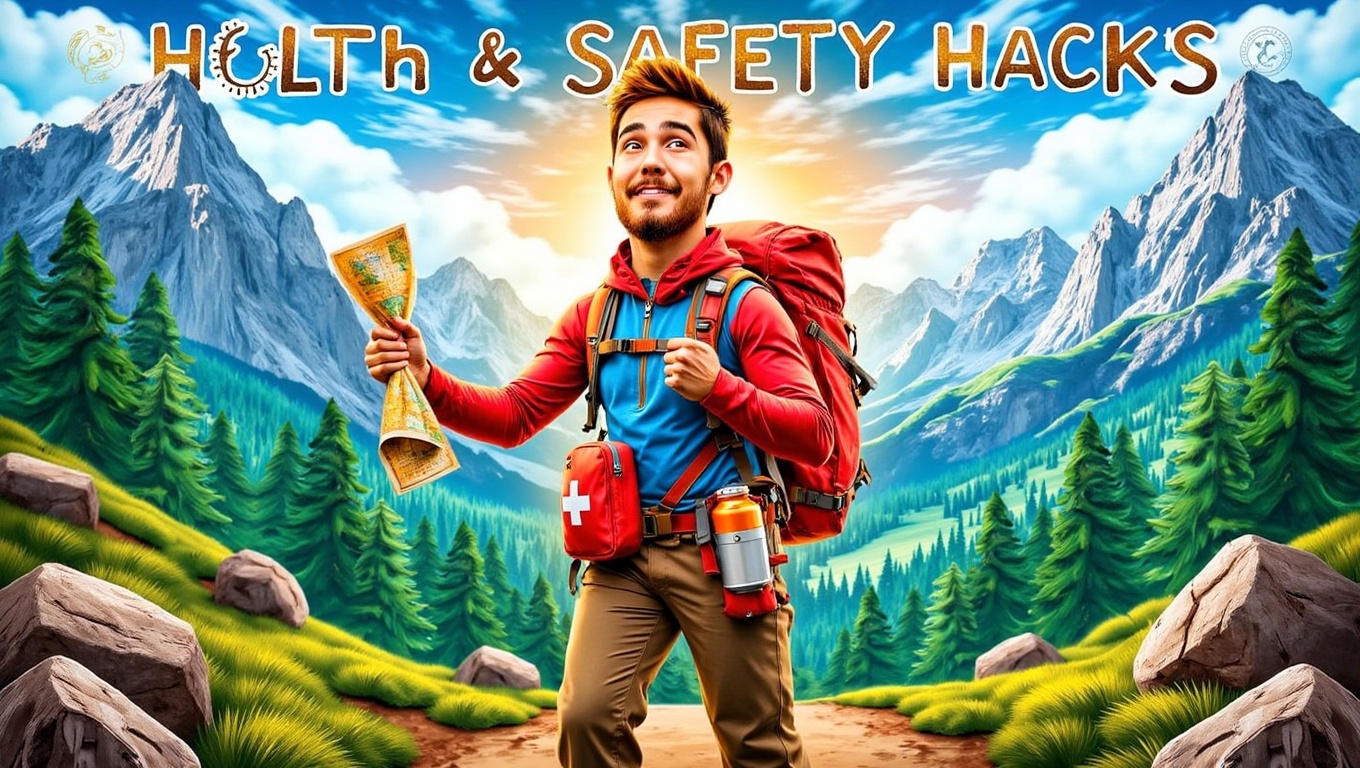Imagine standing at the edge of a cliff, overlooking a breathtaking vista or diving into crystal-clear waters teeming with marine life. Adventurous travel offers experiences that can last a lifetime, but it also comes with risks. That’s why it’s crucial to prioritize safety without dampening your spirit of exploration. In this guide, we’ll share some must-know health and safety tips to help you stay safe while chasing your travel dreams. Ready to dive in?
Pre-Trip Preparation
Before you start dreaming about those Instagram-worthy photos, take a moment to plan for safety. Here’s how you can prepare like a pro:
Research Your Destination
Understanding the safety and health risks of your destination is non-negotiable. Websites like the U.S. Department of State and the CDC are goldmines of information. For instance, if you’re heading to Southeast Asia, you might need vaccinations for hepatitis A and typhoid and you should be aware of diseases like dengue fever. Pro tip: Enroll in the Smart Traveler Enrollment Program (STEP) for real-time safety alerts.
Get Vaccinated
Don’t wait until the last minute—schedule a visit with your healthcare provider at least a month before your trip. You’ll need destination-specific vaccines and medications, plus routine shots like MMR. Measles outbreaks can happen anywhere, so stay protected. Curious about what vaccines you need? Check the CDC’s destination-specific advice.
Pack Smart
A well-packed bag can save the day. Include a first aid kit with bandages, antiseptic wipes, pain relievers and any prescription meds. Don’t forget insect repellent, sunscreen and water purification tablets for remote areas. Oh and a travel-sized sewing kit—trust me, it’s a lifesaver for wardrobe malfunctions!
Staying Safe While Traveling
Once you’re on the road, staying safe is all about awareness and smart choices. Here’s what you need to know:
Personal Safety
Blend in with locals by dressing appropriately and avoiding flashy jewelry or clothes that scream “tourist.” Imagine you’re walking through a bustling market in Marrakech—beautiful chaos, but also prime for pickpockets. A friend of mine lost their wallet there because they were too busy snapping photos. Lesson learned: Keep one hand on your belongings in crowded places.
Transportation Safety
Do your homework on local transport. Use reputable taxi services or ride-sharing apps and never hitchhike. If you’re using public transit, know your route and keep an eye on your stuff. Apps like Google Maps can be lifesavers for real-time updates.
Food and Water Safety
In some places, tap water is a no-go and food prep standards can vary. Stick to bottled water, skip the ice in drinks and eat at trusted restaurants. When in doubt, peel your fruits or cook your veggies. A little caution goes a long way to avoid travel tummy troubles.
Adventure-Specific Safety
Adventurous activities are thrilling, but they come with unique risks. Here’s how to stay safe while having fun:
Hiking and Trekking
Picture yourself on a solo hike in the Swiss Alps—stunning views, but also potential danger. Last year, a hiker got lost because their phone died and they didn’t have a backup plan. Always let someone know your route and return time, carry a physical map or GPS and dress for the weather. Trails can turn treacherous quickly.
Water Activities
Whether you’re snorkeling in the Maldives or diving in the Great Barrier Reef, make sure you’re certified and equipped. Never swim alone and always check local conditions—currents can be sneaky and marine life can be unpredictable.
Wildlife Encounters
In places like Africa or the Amazon, wildlife is part of the adventure, but it’s also a risk. Keep a safe distance, never feed animals and research local fauna. Knowing how to react to a curious elephant or a slithering snake can save your life.
Emergency Preparedness
Even with the best plans, things can go wrong. Being prepared for emergencies is key.
Travel Insurance
Invest in comprehensive travel insurance that covers medical emergencies, trip cancellations and evacuations. If you’re doing adventurous activities, make sure your policy includes coverage for those too. Peace of mind is priceless.
Emergency Contacts
Carry a list of emergency numbers—local police, medical services and your country’s embassy. Save them in your phone for quick access. You never know when you’ll need them.
{ads}What to Do in Case of Illness or Injury
If you get sick or hurt, don’t hesitate—seek medical help fast. In remote areas, this might mean having an evacuation plan. Always carry copies of your medical records and insurance info; it can speed up treatment.
Technology and Tools
In today’s world, tech can be your best friend while traveling. Here are some must-have tools:
- Safety Apps: Apps like “Smart Traveler” or “TravelSafe” send real-time alerts about safety issues in your destination.
- GPS Trackers: For solo travelers or remote adventures, a GPS tracker lets friends or family monitor your location—just in case.
- Translation Apps: AI Translation Earbuds Real Time or Google Translate is a lifesaver in countries where you don’t speak the language. It can help you read signs, menus and even ask for help.
- Offline Maps: Download maps of your destination before you go. You don’t want to rely on spotty Wi-Fi when you’re lost.
Conclusion
Traveling adventurously doesn’t mean you have to compromise on safety. By preparing thoroughly, staying informed and taking smart precautions, you can enjoy every moment of your journey. Remember, the best trips are the ones where you come back with incredible stories—and in one piece. So pack your bags, but don’t forget to pack your smarts too. Happy and safe travels!
